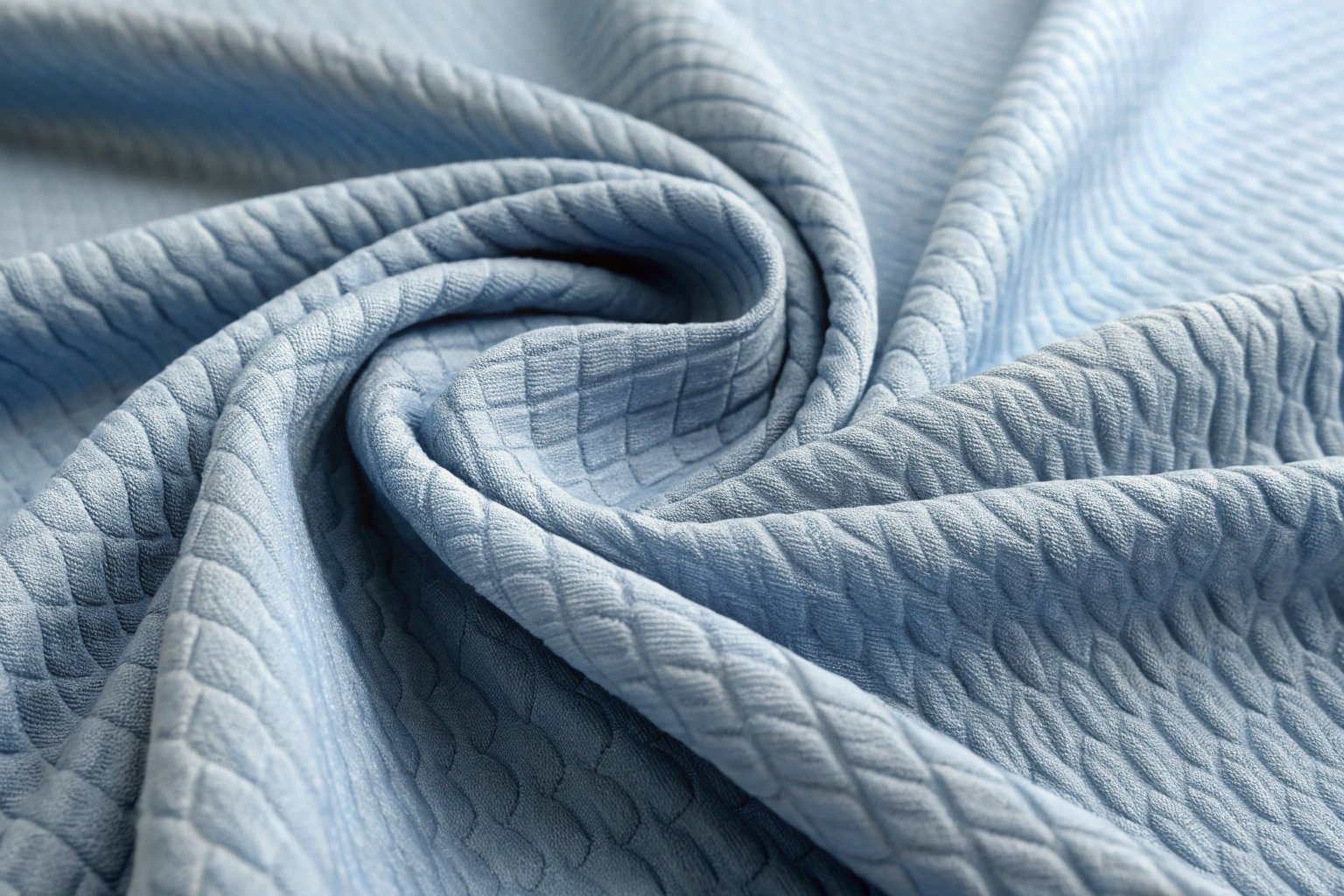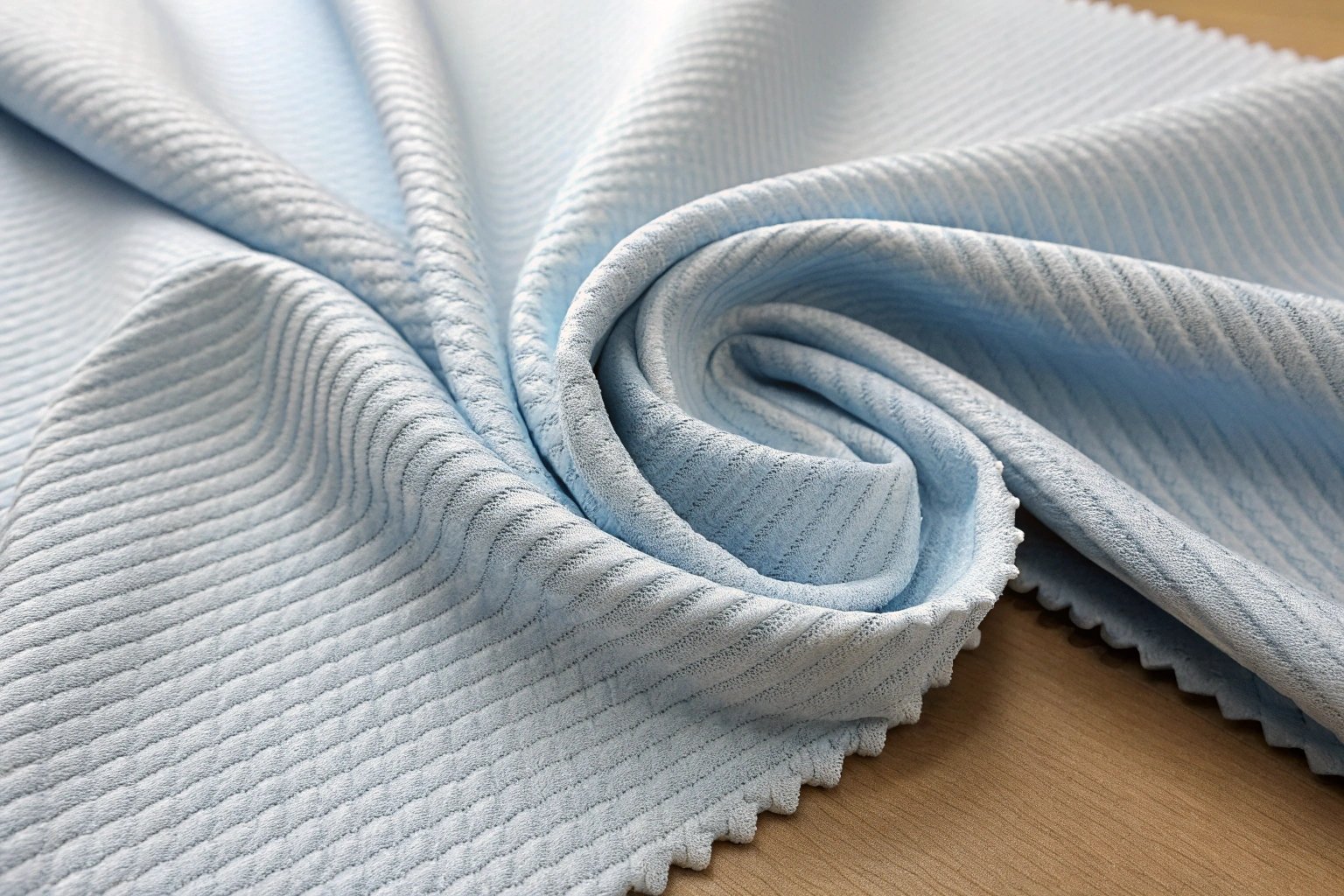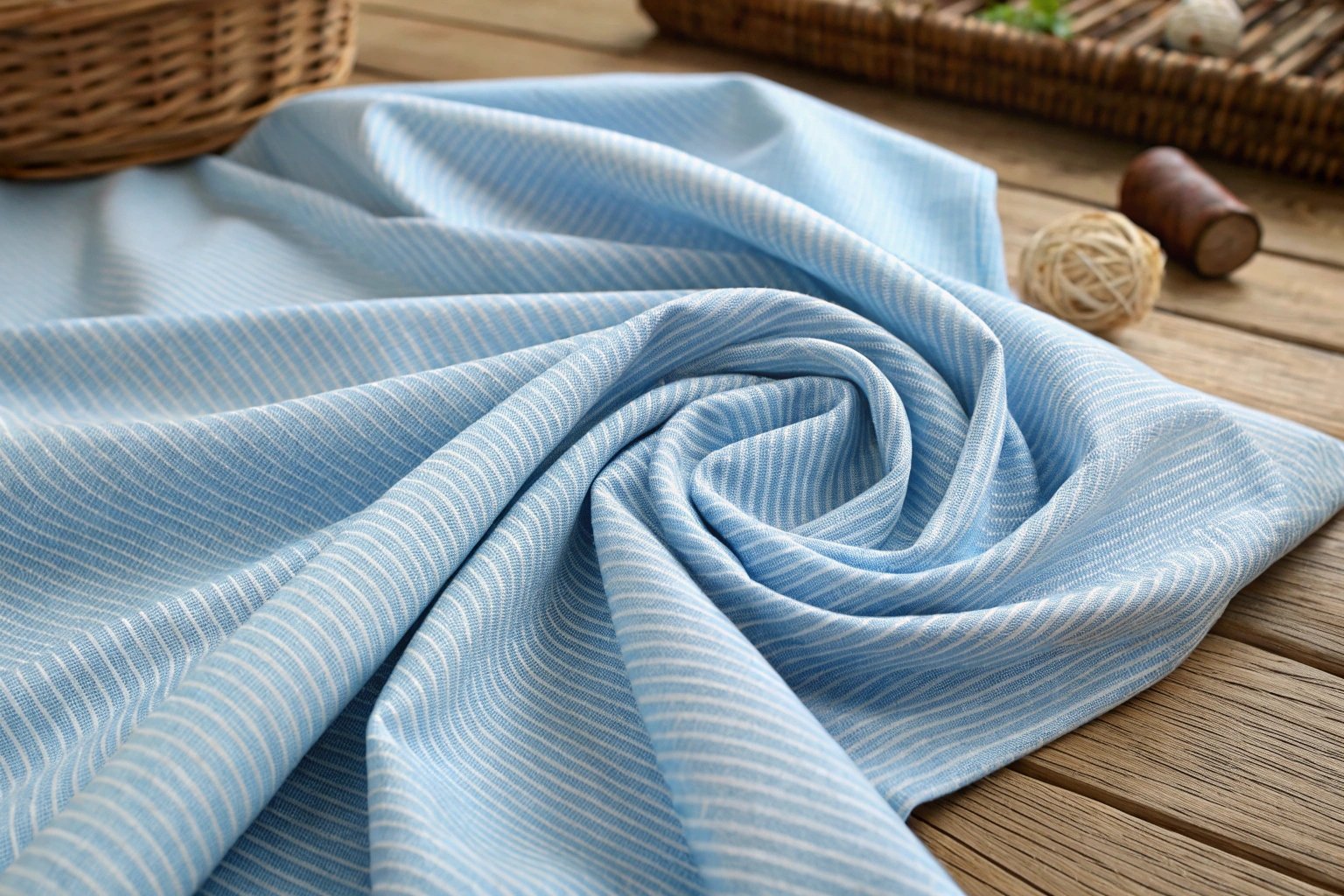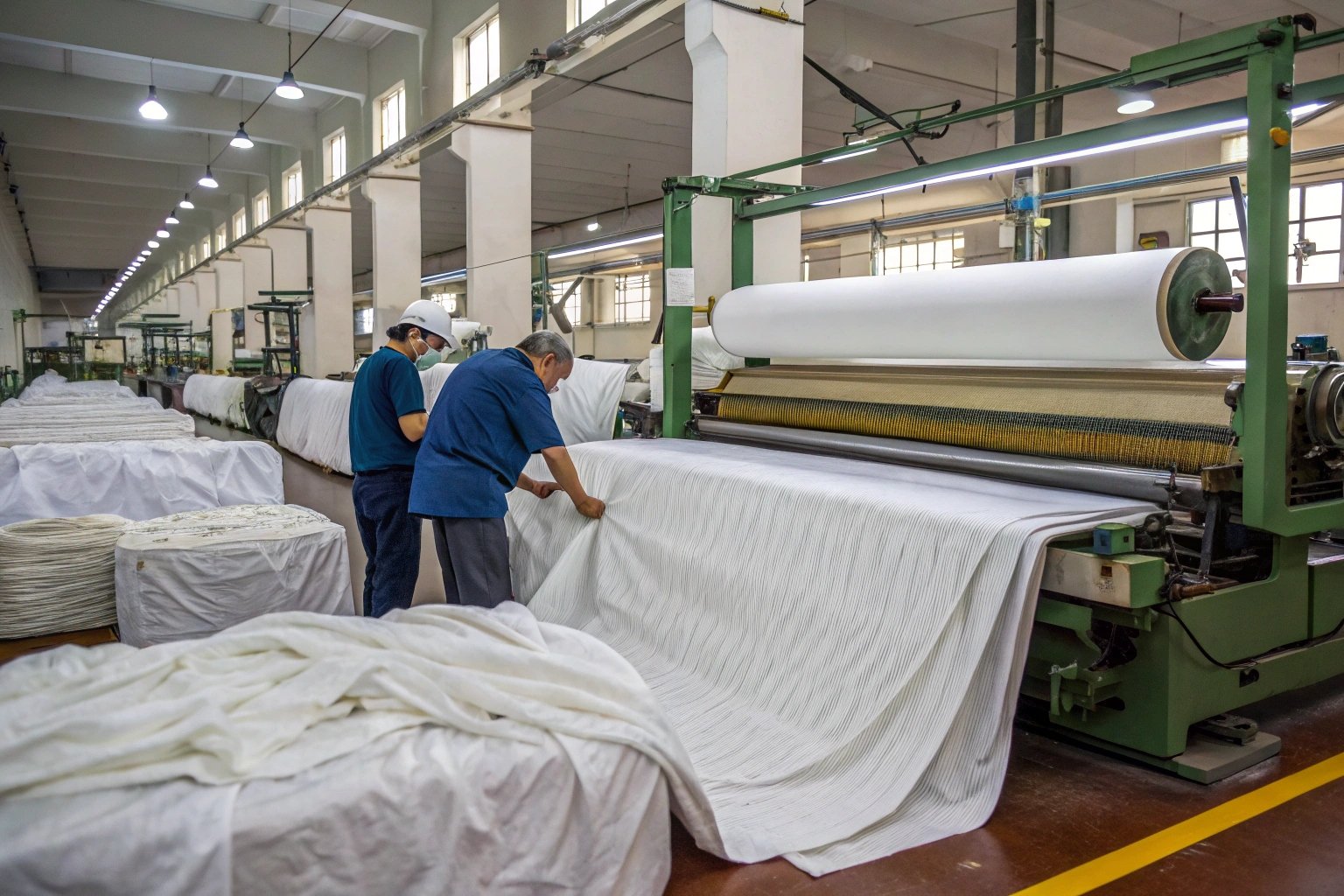Seersucker is a classic fabric, widely recognized for its lightweight, breathable nature, making it a go-to choice for summer clothing. But what exactly makes seersucker unique? Let’s take a closer look at its qualities, uses, and how to identify this charming fabric.

Seersucker is a lightweight, breathable fabric with a distinctive puckered texture, ideal for warm weather. It’s known for its comfort and unique, crinkled appearance.
Seersucker is more than just a summer favorite—its texture and breathability make it a practical choice for those looking for both comfort and style. Whether used for shirts, dresses, or suits, seersucker is a fabric that enhances your summer wardrobe with its distinctive look and feel.
What are the qualities of seersucker fabric?
Seersucker fabric has a unique texture that sets it apart from other textiles. The fabric is lightweight and features a characteristic puckered or crinkled effect that is both visually striking and functional.

Seersucker is lightweight, breathable, and features a puckered texture, which keeps the fabric off the skin, making it highly comfortable for hot weather.
The crinkled texture is created through a weaving technique, where alternating stripes of smooth and puckered threads are woven together. This technique allows the fabric to remain slightly lifted from the skin, improving airflow and breathability. The fabric is usually made from cotton, which is soft and absorbent, adding to its comfort.
What are the disadvantages of seersucker?
While seersucker is a great fabric for summer, it has some limitations that might not make it suitable for all occasions or preferences.
The main disadvantages of seersucker include its limited warmth, tendency to wrinkle under pressure, and its somewhat casual appearance.

One of the primary drawbacks of seersucker is that it’s not suitable for colder weather. Due to its light and breathable nature, it doesn’t provide much warmth, which makes it less appropriate for year-round wear. As a result, seersucker is primarily a summer fabric.
Another disadvantage is that the crinkled texture, while desirable for casual wear, can appear too informal for more formal settings. Seersucker may not be appropriate for professional or formal occasions, as its wrinkled look may be perceived as too relaxed or laid-back.
What is the USP of seersucker fabric?
The unique selling point (USP) of seersucker fabric lies in its combination of texture, breathability, and low-maintenance care. It’s the perfect summer fabric because it allows air to circulate freely, keeping the wearer cool and comfortable even on the hottest days.

The USP of seersucker is its ability to keep you cool by allowing air to flow through the fabric, while its crinkled texture prevents the fabric from sticking to the skin.
Seersucker is also incredibly lightweight, which adds to its comfort in hot weather. The natural crinkles in the fabric lift it off the skin, reducing the surface area in contact with the body and increasing airflow, which keeps the wearer cooler.
How to identify seersucker fabric?
Identifying seersucker fabric is simple once you know what to look for. The fabric is characterized by its distinct puckered texture, which is achieved through a specialized weaving process.
Seersucker fabric is easily identifiable by its alternating smooth and puckered stripes, usually in cotton, that give the fabric its characteristic texture.
The most noticeable feature of seersucker is the puckered texture, which gives it a slightly raised, wrinkled look. These textures typically run in stripes, although other patterns such as checks or plaids can also be created. The fabric itself is often light in weight, soft to the touch, and has a somewhat stiff feel due to the weaving process.
Seersucker is most commonly made from cotton, although blends with other fibers like polyester can be found. The fabric should feel smooth in the non-puckered areas and slightly textured where the fabric is raised.
Conclusion
Seersucker is the ideal fabric for warm-weather clothing, known for its breathable, lightweight feel and its signature crinkled texture. While it may not be suited for colder months or formal settings, its comfort, low-maintenance nature, and cool appearance make it a summer wardrobe essential. Whether you’re wearing a seersucker suit, shirt, or dress, this fabric is sure to keep you stylish and cool in the heat.

